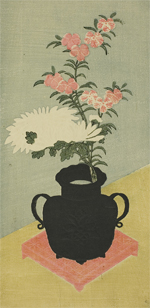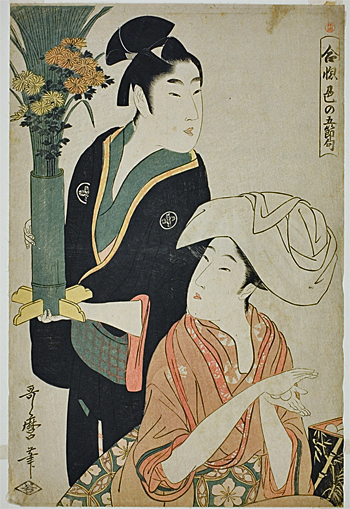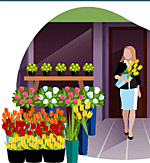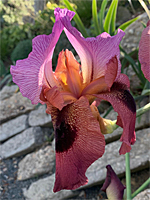The Arranged Flower: Ikebana and Flora in Japanese Prints
 “The Arranged Flower: Ikebana and Flora in Japanese Prints” is an exhibition on display at the Art Institute of Chicago, 111 South Michigan Avenue, Chicago, Illinois, until July 9, 2023.
“The Arranged Flower: Ikebana and Flora in Japanese Prints” is an exhibition on display at the Art Institute of Chicago, 111 South Michigan Avenue, Chicago, Illinois, until July 9, 2023.
Ikebana is considered a form of Japanese high art, reflecting the principles of minimalism, asymmetry, and the appreciation of space. The arrangements are designed to create a sense of balance and harmony between the flowers and the environment in which they are displayed.
Today, Ikebana is practiced by people of all ages and backgrounds in Japan and around the world. There are many different schools and styles of ikebana, each with its own unique techniques and aesthetic principles. Several works on display are surimono — privately commissioned prints circulated among members of poetry circles on special occasions — featuring representations of this practice.
The artful display of flowers in Japanese culture known as ikebana (ike means “to arrange,” and bana or hana means “flowers”) likely originated with arrangements dedicated to Buddhist deities in temples, where the presentations sought to capture the beauty of paradise.
Japan’s first formal school of flower arranging developed in the 15th century. At that time, ikebana was practiced by priests, the warrior class, and members of the imperial court according to a strict set of rules. But as other classes began to appreciate the art, tradition expanded to accommodate the less rigid styles they preferred.
 Ikebana remains a prominent and disciplined manifestation of a larger focus on nature in Japanese culture. The practice emphasizes the lines formed by the placement of the leaves, branches, and twigs and, when successful, conveys a sense of harmony among the plants, their vessels, and their settings.
Ikebana remains a prominent and disciplined manifestation of a larger focus on nature in Japanese culture. The practice emphasizes the lines formed by the placement of the leaves, branches, and twigs and, when successful, conveys a sense of harmony among the plants, their vessels, and their settings.
The nature of time keeps us from seeing historic arrangements themselves, but woodblock prints record floral displays that adorned gathering places and homes. The prints in this presentation largely date to the Edo period (1615–1868), when an intense interest in botany flourished hand-in-hand with ikebana at all levels of society. During this period, people eagerly awaited seasonal changes and the possibilities they created. Several works on display are surimono—privately commissioned prints circulated among members of poetry circles on special occasions—featuring representations of this practice.
The arrangements shown are formal and informal, ordinary and fantastic. What they share is an appreciation for natural beauty often overlooked in everyday life.
The Arranged Flower: Ikebana and Flora in Japanese Prints is curated by Janice Katz, Roger L. Weston Associate Curator of Japanese Art, the Art Institute of Chicago.
(Photos of images from the exhibition courtesy of the Art Institute of Chicago)








